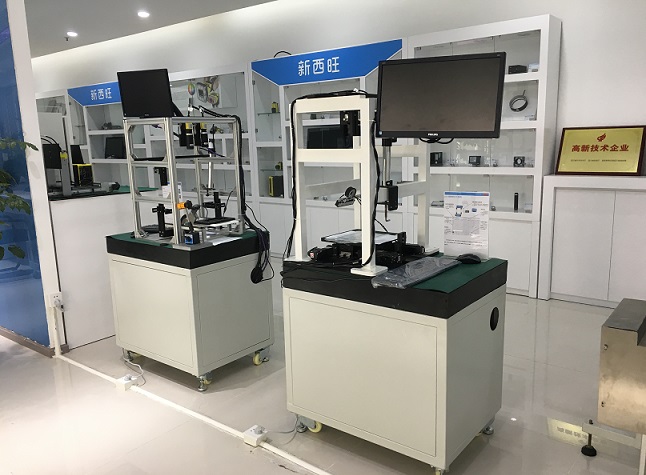Machine vision detection refers to the conversion of the ingested target into an image signal through the machine vision product (that is, the image capture device, divided into two kinds of CMOS and CCD), and the transmission of a dedicated image processing system, according to the pixel distribution and brightness, color and other information, into a digital signal; The image system performs various operations on these signals to extract the features of the target, and then controls the equipment action in the field according to the discriminating results.

What are the benefits of machine vision inspection?
1. Minimize rework.
Some production lines produce more than one product, and multiple products are often seen on the production line, and performing product switching is very error-prone. The use of machine vision inspection systems can quickly identify incorrect labels and alert the operator to the error. Therefore, it can reduce the rework of products caused by labeling errors and free up more energy of operators.
Reduce recalls caused by problems such as bag printing. Although product recalls are sometimes unavoidable, all manufacturers are interested in how to mitigate the risk of product recalls *. Labeling errors are a significant cause of product recalls, and installing a visual inspection solution can actually eliminate the chance of mislabeled products entering the distribution network. By identifying non-compliant packaging in production facilities and removing it, the labor and cost required to correct errors can be significantly reduced.
2. Reduce production cost waste.
Timing is everything when it comes to catching errors - detecting valuable products before they are put into packaging helps ensure that the product is in the right packaging. The visual inspection system can verify that the correct packaging is used before filling, keeping the possibility of wasted product low. If the label is applied after filling, its contents can be verified before it is applied, further reducing the possibility of wasting the product.
3. Control the quality of packaging and canning.
Adding machine vision inspection plans will bring many advantages to the production process, especially when it comes to efficiency. The ability of visual inspection to examine each product up close means that manufacturers have greater peace of mind knowing that any product will leave their factory in top condition. This enhances brand protection, helps minimize rework, reduces the risk of certain product recalls, reduces product waste, and improves overall process efficiency.
4. Improve production efficiency.
Monitoring product quality is an important aspect of the production process. By tracking trends such as defect types, manufacturers can better plan the maintenance of production equipment. Visual inspection equipment can also share valuable data with other production equipment on the production line, and even make temporary adjustments to system Settings to correct minor problems before they develop into larger problems.
What are the environmental factors that affect the machine vision detection effect? The following Xinxiwang editor to explain to you:
1. Ambient lighting
The effect of machine vision detection will be affected by environmental light, and external light will affect the total light intensity of the object under test, increasing the noise of the image data output.
Daily filters can avoid the impact of ambient light to a certain extent, and can change the light information entering the sensor. By using a high-brightness modulated light source, the exposure time of the sensor is reduced and the aperture is reduced, which can minimize the impact of ambient light. Using infrared cameras and other measurements can reduce the effects of visible light.
2. Temperature
Temperature changes can also affect the effectiveness of machine vision detection. The camera will mark the normal working temperature range at the factory, most industrial cameras can work between -5 ° C and 65 ° C, too cold or too hot will affect the normal operation of the camera.
For example, when the exposure time is long or the ambient temperature is high, the temperature inside the camera will rise, and the temperature rise will cause the circuit to generate dark current. It is a major source of noise in image sensors. Studies have shown that every 8°C increase in the temperature of the CCD chip, its dark current will double.
On the other hand, the object being measured can also be affected by changes in temperature, and we all know that many objects will expand and contract when heated. Therefore, when such objects are measured, their length and volume will change.
3. Dust
The camera is stained with dust and dirt, which will definitely affect the final image. For machine vision inspection, even very small differences are worth paying attention to. Especially if the sensor is gray, the photo will form little by little dark areas.
4. Humidity
If the air is too humid and water vapor is attached to the LED or lens, imaging will be affected.
5. Vibration
Vibrations can cause blurred and distorted images. However, most industrial cameras are treated with anti-vibration. Robots and track-type cables allow the camera to move well without being affected by vibration.
6. Power supply voltage
Changes in the power supply voltage will cause the light source to be unstable and produce noise that changes over time.
7. Electromagnetic interference
Electromagnetic interference is an unavoidable interference factor in industrial inspection field. The start and stop of motors, transformers, and capacitors will cause inrush current, EFT electronic pulse interference, and a lot of radiation; The movement of industrial equipment can also cause space discharge or contact discharge problems (ESD). Industrial cameras belong to the image sensor class, and themselves are weak current work, so they are particularly seriously affected, and circuit protection must be done.
Phone:028-62705808
Fax:028-62705808
Mobile Phone:18215640190
Email:sales@cdxiwang.com
Address:2-8-6, Chen Electric Technology Innovation Park, 68 Shuangbai Road, High-tech West District, Chengdu